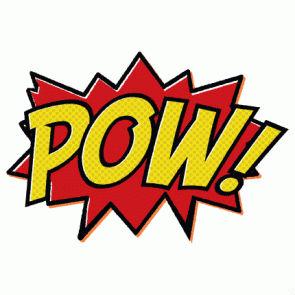Forget the overweight Comic Book Guy from The Simpsons, the Big Bang Theory and the kid with coke-bottle glasses who inhabits every high school teen flick.
The comic is now less geek and more chic, making a major mainstream comeback and evolving into exciting new forms as the more respectably denoted graphic novel.
Not long ago comics were perceived as a domain for the less socially successful male adolescent. The nerds are no longer alone. There has been a consistent tendency by the comic industry over the last twenty years to move beyond the juvenile power fantasies of the superhero genre and tell more compelling stories that resonate.
But even the traditional superhero narrative has found a new audience. A number of successful Hollywood blockbusters have elevated many popular comic characters from the realm of geekdom into popular culture.
The X-Men series, Batman, Ironman and Sin City were all massively profitable movies that brought huge amounts of attention to an industry that was struggling to halt declining sales. The Avengers had the most profitable opening weekend for any film in box office history, while Batman: The Dark Knight grossed over a billion dollars worldwide. This kind of success has made the comic hot property in Hollywood and getting people seriously interested in a medium they would previously have never considered reaping comics chracters a wider audience then ever before.
Graphic publications, whether the typical serialised monthly superhero genre or the brooding indie graphic novel, now offer both sexes, young and old, a level of plot, characterisation and engagement to equal any novel or film.
The breadth of subject matter is vast and varied, much like the visual artistry styles. French animator and cartoonist Guy Delisle uses the genre to document a collection of memoirs detailing his experiences in places as remote as Shenzhen, Burma and Pyongyang. American cartoonist Art Spiegelman used the format to depict his father’s real-life experience as a Jew surviving the Holocaust in Maus. This graphic novel was received with such acclaim that the Wall Street Journal described it as “the most affecting and successful narrative ever done about the Holocaust.” Spiegelman also took out the Pulitzer Prize for it in recognition of the high quality content and visual design.
So what makes the comic, generally considered a second tier medium, so appealing? Popular publishing company Allen and Unwin puts it down to the fact that the graphic novel connects on two levels. On one level it boasts great reading in the traditional sense but on another level it requires reading in a new way; the reader must make connections between the images and the texts to create links between each panel and the page as a whole. The publishing house believes this kind of literacy is not only new but vital in interacting with and succeeding in our multimedia world.
Graphic novels have a visual vibrancy and energy that has produced a successful medium for tackling big issues in a story-telling way. More often than not the content is politically loaded and acts as a successful tool for teaching visual literacy whilst educating simultaneously. With classrooms becoming dominated by the multimedia world of computers, iPads and interactive learning, it’s not surprising to find literature subjects are beginning to incorporate graphic novels into the curriculum.
A good example of this is the recently revised graphic novel version of The Great Gatsby. The comic edition is now being used by teachers in secondary schools to successfully re-introduce an old classic to a modern audience. Nicki Greenberg’s graphic adaptation uses F. Scott Fitzgerald’s plot, characters and, setting but tells the tragedy of Gatsby via a predominantly visual media.
Scott McLoud has even produced an exploration of the genre in comic form. Understanding Comics looks at the medium of comics and their impact on society. Apple Macintosh co-creator Andy Hertzfelt was so impressed he described it as one of the most insightful books about designing graphic user interfaces ever written.
Understanding Comics demanded comics be taken seriously and pushed their almost viral recent success. Graphic novel king Alan Moore, the famed writer behind such modern classics as Watchmen is a huge fan.
Ironically, digital media, which has long been proclaimed as “the death of print” could be the saviour of the comic. Marvel Comics General Manager Peter Phillips says the company is experiencing a huge surge. “We’ve seen an enormous amount of growth both in downloads and sales for single issue, digital comics,” he said.
Phillips attributes this success to the fact that people have a different relationship with high-volume content mediums like comics. Being constantly surrounded by fast, frequent snippets of information means we are able to receive and process this data faster than ever before.
Creative director of Cognito Comics, Daniel Burwen, agrees. He says in the past the “fully-loaded” visual and didactic content of the comic could be more distracting than conducive but modern engagement levels have risen as a direct result of increased technological interaction.
The digital world has offered a grand entrance for the comic comeback and artists, writers and publishers are reaping the rewards in the rise of digital comic purchases, box office hits and a more equalled balance of male and female appreciation.





